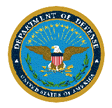
|
|
of Problem
Review
Results
Finn, S. (1997). Origins of media exposure: Linking personality traits to TV, radio, print, and film. Communication Research, 24, 507-530.
Hiltz, S. R. (1996). Asynchronous learning networks. Asynchronous learning networks conference at the New Jersey Institute of Technology. [On-line]. Available URL: http://eies.njit.edu/~hiltz/CRProject/Vc_video
Infante, D., Rancer, A., & Womack, D. (1997). Building communication theory. Prospect Heights, IL: Waveland.
Joinson, C. (1998). Turn up the radio recruiting. HR Magazine, 43 (10), 64-70.
Kennedy, R. E. (1998). Social influence theory. New Mexico State communications study program. [On-line]. Available URL: http://web.nmsu.edu/~comstudy/sit.html
Levy, M. R., & Windahl, S. (1985). The concept of audience activity. In K. E. Rosengren, P. Palmgreen, & L. Wenner (Eds.), Media gratification research: Current perspectives (pp. 109-122). Beverly Hills, CA: Sage.
Lindlif, T. R., & Shatzey, M. J. (1998). Media ethnography in virtual space: Strategies, limits, and possibilities. Journal of Broadcasting and Electronic Media, 42 (2), 170-190.
Littlejohn, S. W. (1996). Theories of human communication. Belmont, CA: Wadsworth.
Maibach, E., & Parrott, R. L. (1995). Designing health messages. Thousand Oaks, CA: Sage.
McQuail, D. (1997). Audience analysis. Thousand Oaks, CA: Sage.
Merli, J. (1998). 25-54 demo rules, but slides again; group still leads in national spot money invested. Broadcasting & Cable, 128, 84-85.
Morton, L. (1995). Gatekeepers as target publics. Public Relations Quarterly, 40 (2), 21-24.
Morton, L. (1998). Segmenting publics: An introduction. Public Relations Quarterly, 43, (3), 33-35.
O’Hair, D., Friedrich, G. W., & Shaver, L. D. (1998). Strategic communication in business and the professions. Boston: Houghton Mifflin.
O’Hair, D., Friedrich, G. W., Wiemann, J. M., & Wiemann, M. O. (1995). Competent communicaiton. New York: St. Martin’s.
Rice, R. E. (1993). Media appropriateness: Using social presence theory to compare traditional and new organizational media. Human Communication Research, 19, 451-484.
Rosengren, K. E., Wenner, L. A., & Palmgreen, P. (1985). Media gratifications research. Beverly Hills, CA: Sage.
Short, J., Williams, E., & Christie, B. (1976). The social psychology of telecommunications. London: John Wiley & Sons.
Sommer, B., & Sommer, R. (1997). A practical guide to behavioral research: Tools and techniques. New York: Oxford University.
Stohl, C., & Redding, W. C. (1988). Messages and message exchange processes. Process: Communication behavior in organizations, 25, 451-502.
United States Census Bureau. (1997). The American community survey [On-line]. Available: http://www.census.gov/CMS/www/index_c.htm